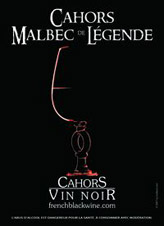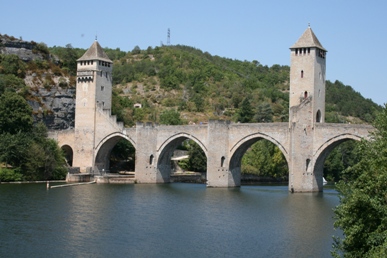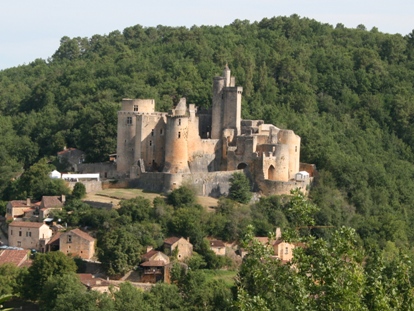Cahors"Cahors is producing some of the most individual wines in the South-West" (Oz Clarke's Wine Atlas, Ted Smart)
Département
- Lot
Cahors was granted appellation status in 1971 and today there are 4,200 hectares of vineyards producing around 30 million bottles of mainly red wines around the medieval city of Cahors (which should be visited for its stunning bridge - Pont Valentré, pictured - alone) stretching west along both sides of the Lot Valley. Lots of sleepy medieval villages appear dotted around this poly-cultural which alternates between vines, cereal crops and various fruit orchards. The region has an undisturbed Englishness about it with gently undulating hills of oak forests. Cahors has a dual-terroir (stony limestone causses and sandy, gravelly côteaux) but this is not responsible for the two styles of wines produced (light and easy-drinking/dark and serious); rather, many producers feel the best wines are a blend of both regions and the stylistic differences are achieved as a matter of the winemaker's choice. See the blog for a 2010 update on the terroir of Cahors Cahors benefits from a virtually unique
situation being equidistant from the Atlantic, the Mediterranean and
the Pyrenees. This gives it the benefits of an oceanic climate Cahors wines are perfect with the local food which is based on wild game, truffles and mushrooms, duck and goose. Inevitably the more basic wines can be drunk fairly young whereas more serious cuvées (such as those with Tannat included in the blend or the better mono-varietals are better with a little more time). Pure Malbec wines can develop well over a couple of decades it seems although these should not be confused with the traditional "Black Wine" of Cahors whereby grapes would be baked or boiled prior to fermentation. One or two growers are experimenting again with this style. We do not like it, much preferring the more modern style of wines made today. There is some division among consumers over the use of oak - see my blog about this. Recent vintages have been extremely good with the excellent 2005 flanked by 2004 and 2006, both responsible for many wines even better than the 2005s and more forward. 2007 looks very attractive too with 2008 a potentially strong vintage. As elsewhere, 2009 is bound to be exceptional.. Château Bonaguil (pictured) is near Fumel at the western end of the appellation, not far from Soturac (home of Château Lamartine). It appears out of nowhere surrounded by oak forests. Very Arthurian. See also South-West France Map |
|
You must be aged 18 or over to purchase wine. |





 Cahors has been famous for its full red wines since
the 13th-century. Traditionally these were the infamous "black wines" made from the Auxerrois grape (better known as Côt or Malbec) and even today the variety
must make up at least 70% of the wine. Some growers complement it with
Merlot to soften the wine or they will include some of Madiran's Tannat
which adds structure. Most producers' top cuvées are 100% Malbec (they all
seem to accept the internationalism of this name).
Cahors has been famous for its full red wines since
the 13th-century. Traditionally these were the infamous "black wines" made from the Auxerrois grape (better known as Côt or Malbec) and even today the variety
must make up at least 70% of the wine. Some growers complement it with
Merlot to soften the wine or they will include some of Madiran's Tannat
which adds structure. Most producers' top cuvées are 100% Malbec (they all
seem to accept the internationalism of this name). up to
June then from July the heat of the Mediterranean takes over with the Autan wind cooling things down every so often to help produce ripe
grapes in a healthy condition without over-stressing the vines.
up to
June then from July the heat of the Mediterranean takes over with the Autan wind cooling things down every so often to help produce ripe
grapes in a healthy condition without over-stressing the vines.